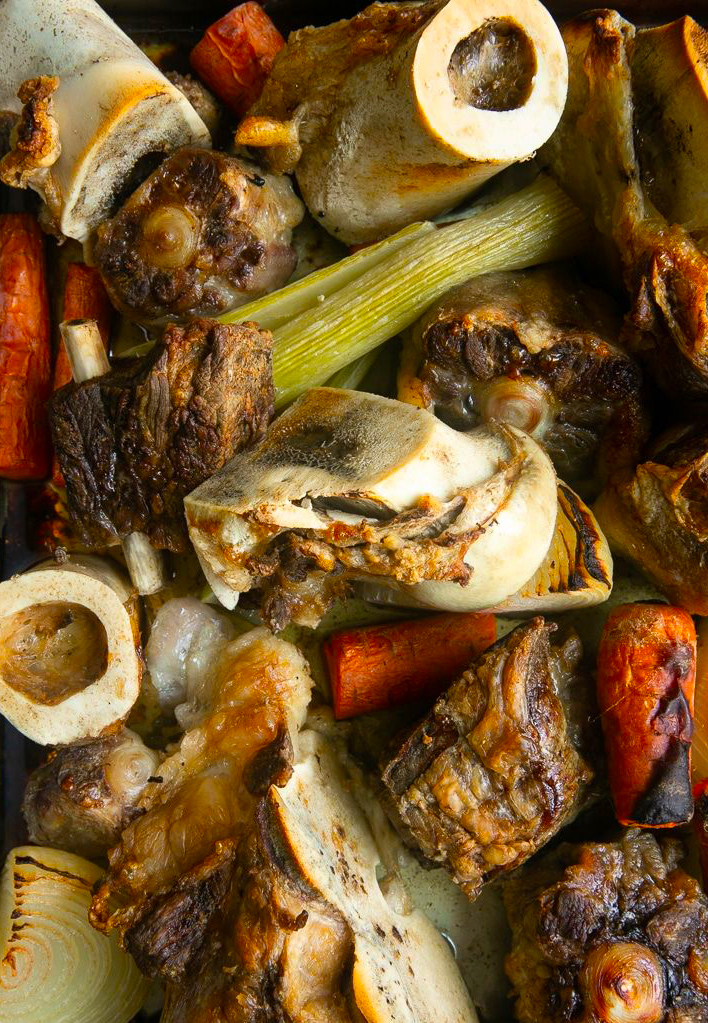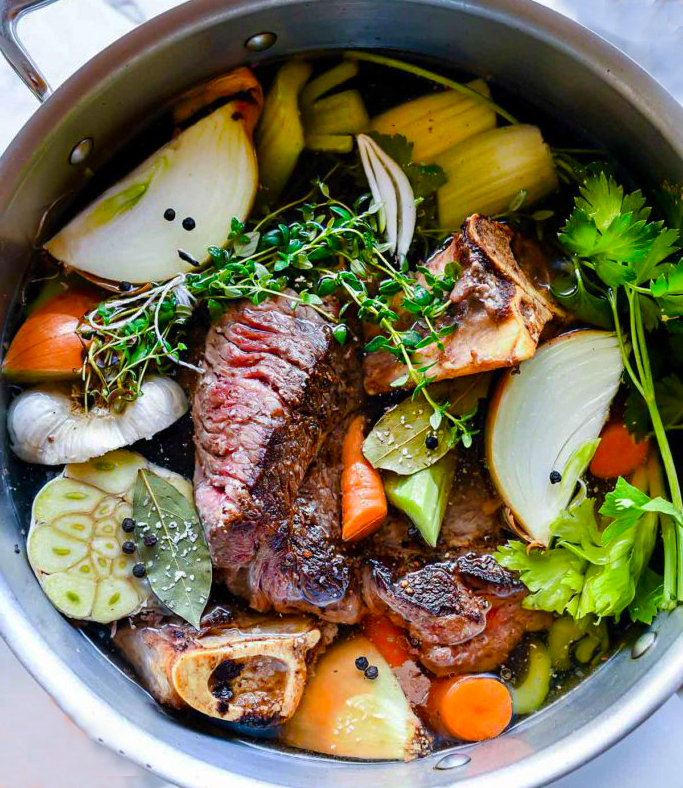Homemade Beef Stock (what the French call Fond de Boeuf)
Beef and veal bones are hard to come by these days, but essential for a good stock. Ask your butcher to save you some neck bones, shank and ribs for you, as well as some meat trimmings (or buy some extra cheap beef). Freeze them and when you have a good quantity and time on your hands, make the stock. It takes 30 minutes to prepare, and then a few hours to simmer into a rich, homemade stock. You need:
3kg beef bones and trimmings
2 medium onions, quartered
2 large carrots, cut into 5cm chunks
2 stalks of celery with leaves, cut into 5cm chunks
3-4 tbsp olive oil
1 tbsp tomato paste/puree
3½ litres water (divided)
2 bay leaves
4 sprigs of parsley
½ tsp black peppercorns
4 sprigs of fresh thyme (or ¼ tsp dried thyme)
Preheat the oven to 220’C. Trim the larger pieces of beef and cut into 3cm pieces.
Put the bones and beef pieces in a large roasting pan with the onions, carrots, and celery. Toss with the olive oil, then roast for 45 minutes, turning a few times so the beef browns evenly.
With a slotted spoon transfer the beef and vegetables to a large stockpot (or you could use a pressure cooker).
Place the roasting pan over a medium heat, add 2 cups of water and 1 tbsp of tomato paste and cook while stirring, for 2 minutes. Bring to the boil then add to the stockpot, along with the remaining 3 litres of water. If the water doesn’t quite cover the bones, add a little more water.
Add the bay leaf, parsley, peppercorns, and thyme then put over medium-high heat to bring to the boil. Skim off any foamy scum that forms on the top, then reduce the heat to the lowest setting and allow to simmer for 4 hours.
Taste – the stock should be slightly reduced and full of flavour. If you want a richer, more concentrated flavour, cook longer to reduce a little more.
Strain through a sieve (lined with cheesecloth if you want a very clear broth) into a large bowl, cover and refrigerate until chilled.
When cold remove any solid fat from the surface.
After this you can ladle it into freezer containers or jars, leaving 3cm of headspace as it expands in the freezer.
Freeze up to 3 months.

